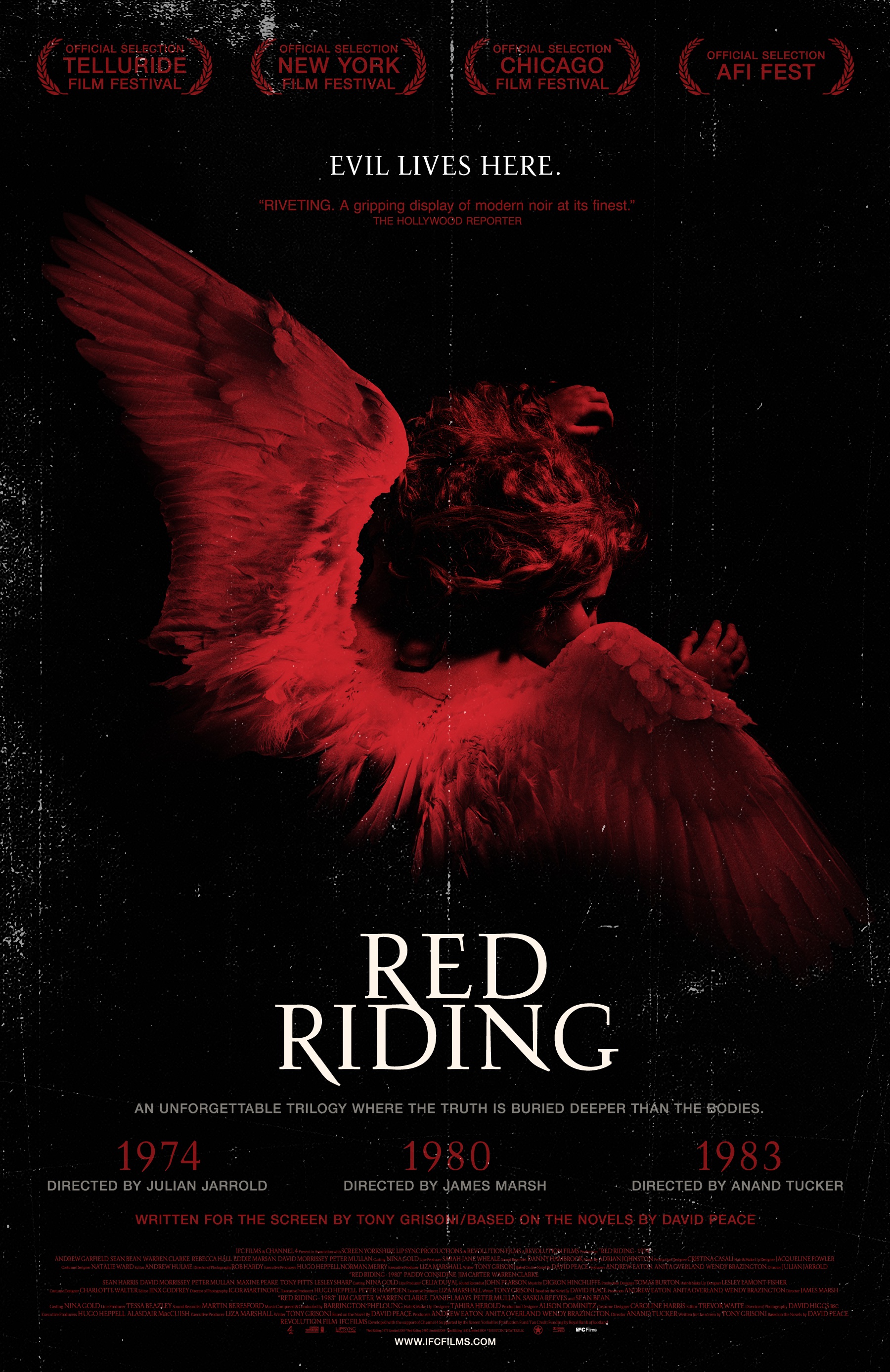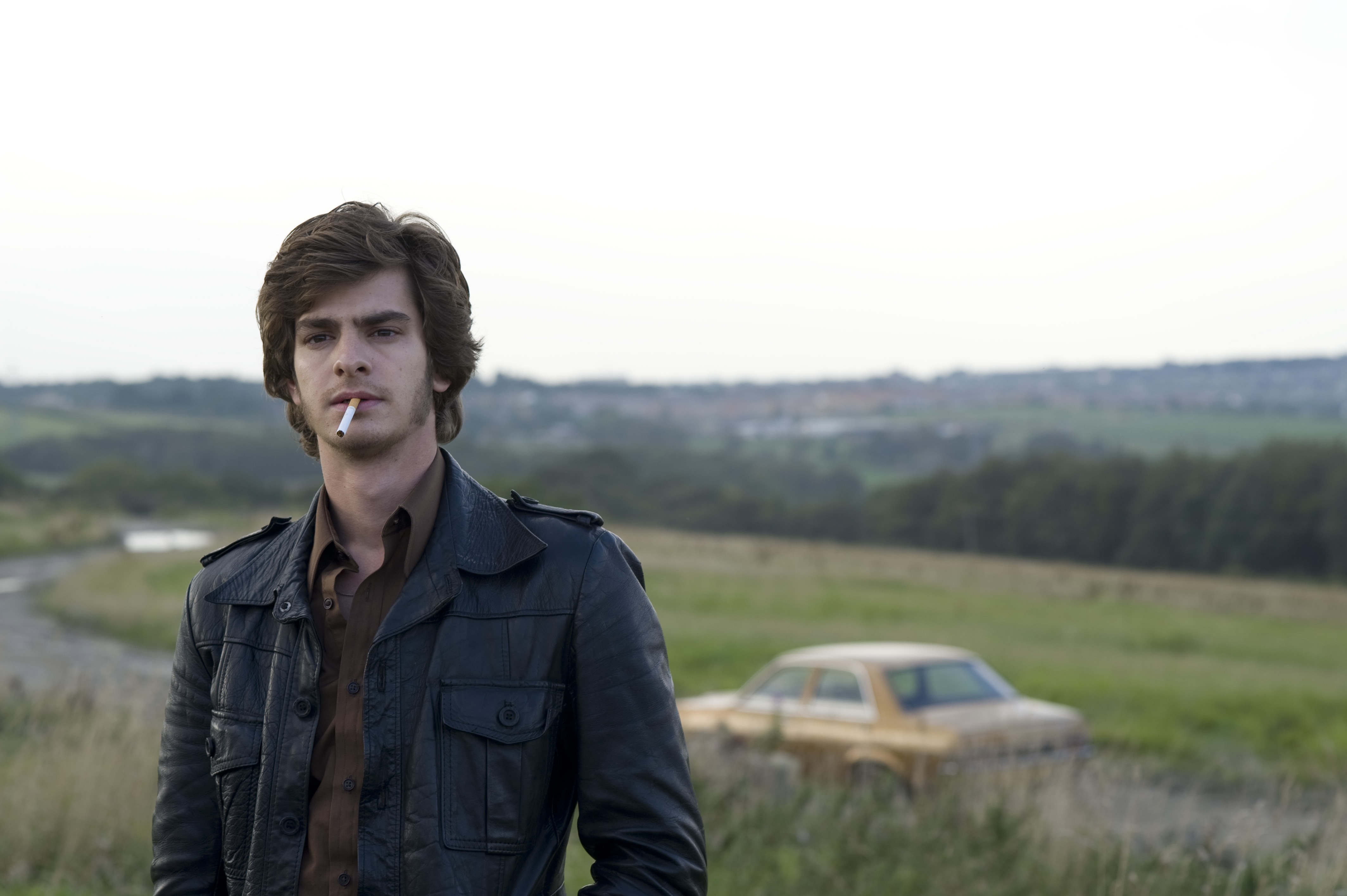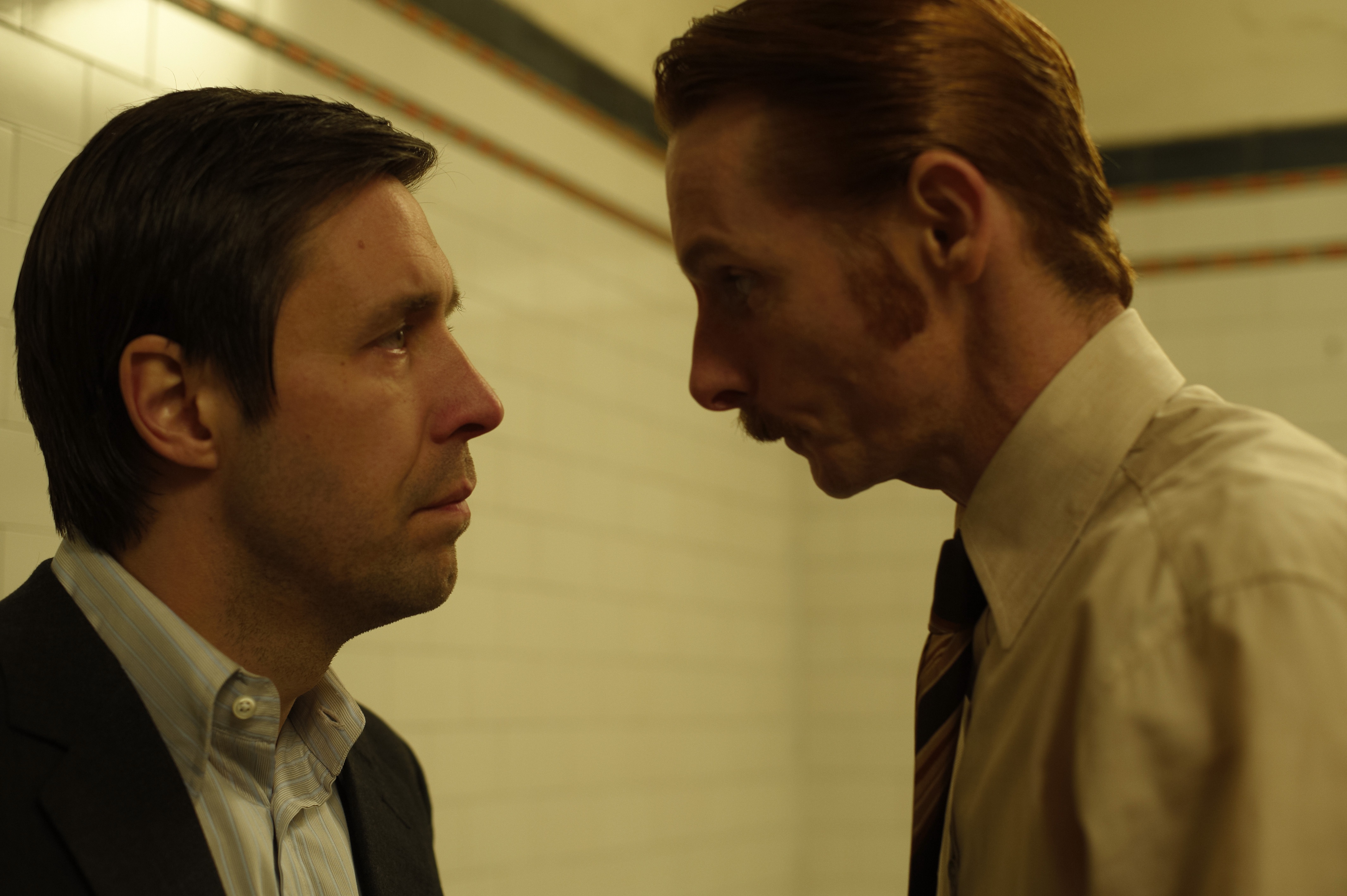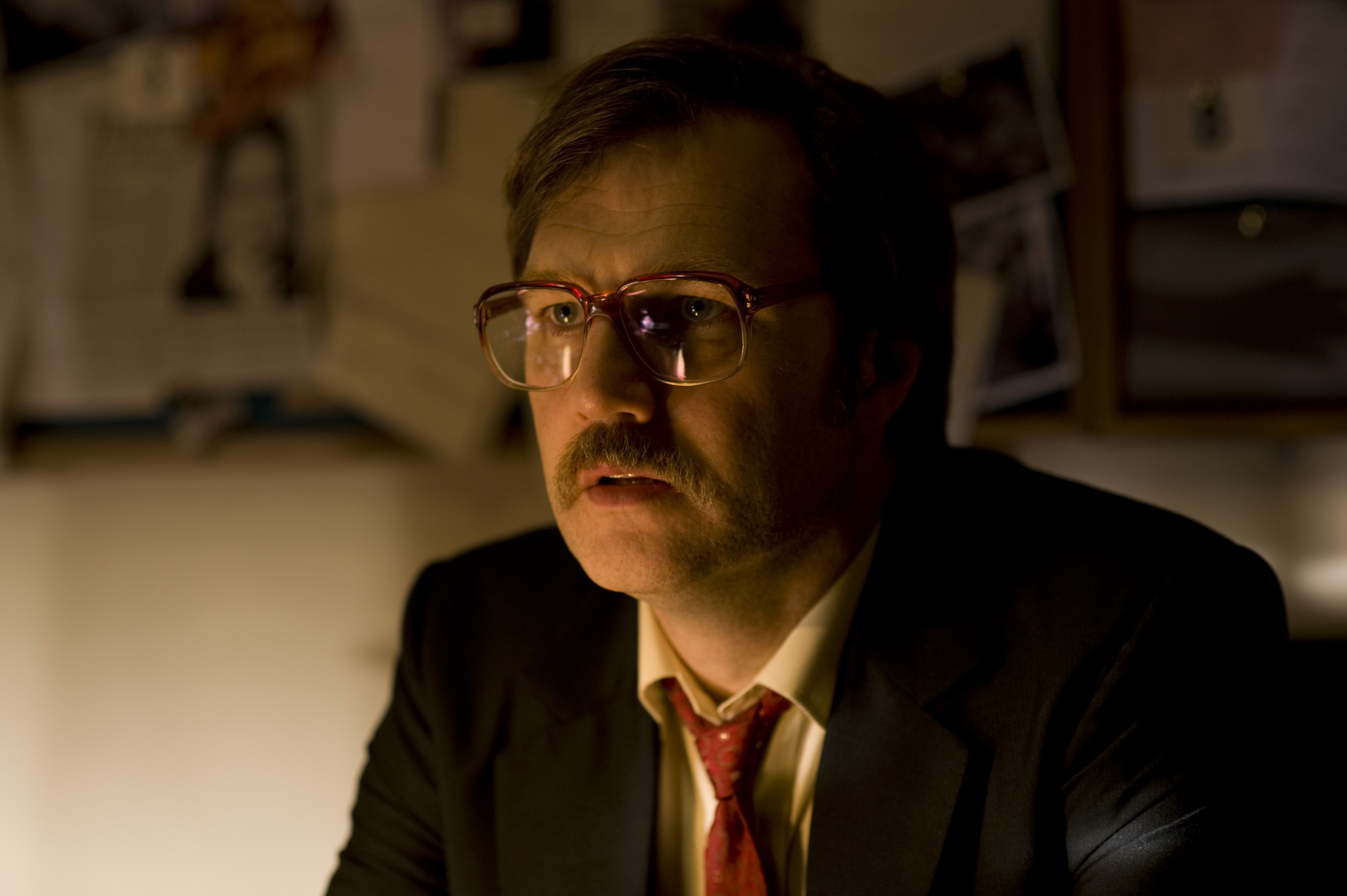Fri 5 Feb 2010
Yorkshire Calling
Posted by Ethan under Film Review, NYC Film Critic
Comments Off on Yorkshire Calling

The Red Riding Trilogy
Directed by Julian Jarrold, James Marsh and Anand Tucker
Starring Andrew Garfield, Rebecca Hall, Sean Bean, Paddy Considine, Maxine Peake, David Morrissey and Mark Addy.
Individual Ratings:
Red Riding: 1974: ***
Red Riding: 1980: ***1/2
Red Riding: 1983: **1/2
Overall Rating: ***
As a rule, I’m not the world’s biggest crime buff. If I had to rank my favorite genres, stories involving killers/thieves/all-around bad dudes and the cops/agents/vigilantes that pursue them would come in towards the bottom of the list.
Hence, I don’t watch any of the procedurals cluttering up primetime television (no Law & Order, no NCIS), I don’t read books by James Patterson and I don’t rush out to see cinematic potboilers like Perfect Stranger or Taking Lives. That said, there are also numerous crime pictures–or, to use the snooty film-school term, policiers–that I’ve flipped for and could watch again and again, movies with titles like L.A. Confidential, Zodiac, Insomnia (the Swedish original, not the American remake) and, of course, Chinatown. The common thread binding these films is that they use their central crime or crimes as a way to explore a bigger picture, be it a family, a city or an entire country or era. That’s the kind of narrative that captures my attention, one that tackles the implications of the crime in more detail than the crime itself.
It’s for this reason that I’ve been anticipating the Red Riding trilogy, a trio of crime stories produced for British television last year and slowly rolling out on American movie screens over the next few months courtesy of IFC Films. Based on a series of four novels by David Pearce, the movies unfold in the bleak countryside of northern England over a nine-year span, from 1974 to 1983. Each film takes place in a specific year–1974, 1980 and 1983 respectively–and covers a specific crime while also dealing with a larger mystery involving the disappearance of several young girls from the area and the corrupt police force that may be hiding crucial information about their whereabouts.

In theory, the net effect of viewing all three Red Riding movies back-to-back (which is the ideal way to see them if you can clear six hours from your schedule) is to witness the unraveling of a community that’s already rotten at its core. To be honest though, the first impulse viewers will probably have after leaving the theater is to compare notes about the myriad plot threads in an effort to make sense of the movies’ sometimes murky storytelling. Red Riding is a rare instance where the overall impact of a trilogy is superior to each individual installment. Sure, The Lord of the Rings, Three Colors and the original Star Wars adventures are also best enjoyed as a whole, but The Two Towers, Red and The Empire Strikes Back can be watched and celebrated as terrific stand-alone films. In contrast, it’s hard to imagine anyone wanting to revisit only one Red Riding chapter without also seeing the other two. For one thing, the movies just aren’t coherent enough on their own terms. The climax of 1983, for example, depends heavily on plot points initially introduced early on in 1974. Likewise, an important revelation in 1980 is all but meaningless if you don’t remember the same scene as it played out in the earlier film.
Even with that major caveat, I’m enthusiastically recommending the Red Riding series for its scope and ambition, as well as the fact that it showcases a side of England rarely seen in most of the contemporary British films that make it to these shores. Movies like An Education, Pirate Radio and In the Loop dwell in the relatively sunny south–often in London specifically–and depict the country’s citizens as generally good-hearted, if bubble-headed and/or priggish, folk. Red Riding, on the other hand, presents an unrelentingly bleak view of the Sceptred Isle and its inhabitants, particularly those that dwell in of the apparent hellhole known as Yorkshire. Granted, it’s important to remember that the series takes place at a time when the entire country seemed poised on the edge of collapse, plagued by rampant unemployment, a paralyzed government and a collapsing infrastructure (gee…sound familiar?). Northern England’s industrial towns were hit especially hard by this turmoil, fostering a sense of isolationism that’s expressed in a recurring line of dialogue heard throughout the Red Riding series: “This is the North where we do what we want.”

The other reason these movies are so interesting to watch is the way they cut against the traditional aesthetic approach to a trilogy. Usually, all three films adhere to one artistic vision; that’s why The Empire Strikes Back and Return of the Jedi still employ the same visual palette and stylistic flourishes that George Lucas established in Star Wars even though he wasn’t behind the camera for the sequels. With Red Riding though, the producers hired three different directors and gave them the creative freedom to essentially make three different movies.
For example, director Julian Jarrold adopts an almost documentary-like approach to the first installment, 1974, capturing the action on 16mm film frequently in outdoor locations with a minimum of artificial light. Not only does this approach capture the grittiness of the setting and the era–in fact, 1974 resembles the gritty made-for-TV movies that often aired on the BBC in 1974–but it also complements the story, which follows the young reporter (Andrew Garfield) that first tries to connect the missing children to the Yorkshire police force but quickly finds himself over his head. James Marsh’s 1980 on the other hand takes its visual cues from L.A. Confidential, submerging the screen in inky shadows to reflect the darkness at the heart of the movie’s morally conflicted hero–a constable (Paddy Considine) handed the unenviable task of digging up dirt on his fellow officers, while also protecting his own secrets. Finally, Anand Tucker uses the crispness of high-end digital video (specifically the Red camera favored by Steven Soderbergh and Peter Jackson) to literally lead the guilt-ridden cop (David Morrissey) that spent years covering up his department’s crimes out of the dark and into the blinding white light of the truth.

If forced to rank the movies in order of quality, 1980 just edges out 1974 for the top spot largely because of Considine’s terrific performance and the fact that it offers the most compelling central mystery of the three movies. On the other hand, its relatively close-ended plot makes it a weak middle chapter in the context of the entire series because it has the least to do with the overarching narrative. Evaluating the trilogy purely from that standpoint, 1974 is the most successful installment as it effectively establishes the setting and major players and sets the larger story in motion. Unfortunately, the movie is marred by an ill-conceived romance between the reporter and the mother of one of the missing girls, a storyline that strains credulity from the moment it is introduced. As for 1983, it comes up short both as a grand finale and a standalone story. Unlike the first two installments, the film lacks a strong central character, instead splitting the focus between Morrissey and a bumbling lawyer played by Mark Addy. It also works overtime to bring the grim proceedings to a redemptive ending that can’t help but feel forced. Still, the immersive power of the entire trilogy carries the day; if you go to the movies to be transported to another time and place–even if that time and place is ’70s-era Yorkshire–the Red Riding films offer that escape.
The Red Riding Trilogy opens in New York today in a special roadshow release (all three films for the price of one). The movies will open in additional markets throughout February and can also be seen through IFC’s Video on Demand service.

No Responses to “ Yorkshire Calling ”
Sorry, comments for this entry are closed at this time.